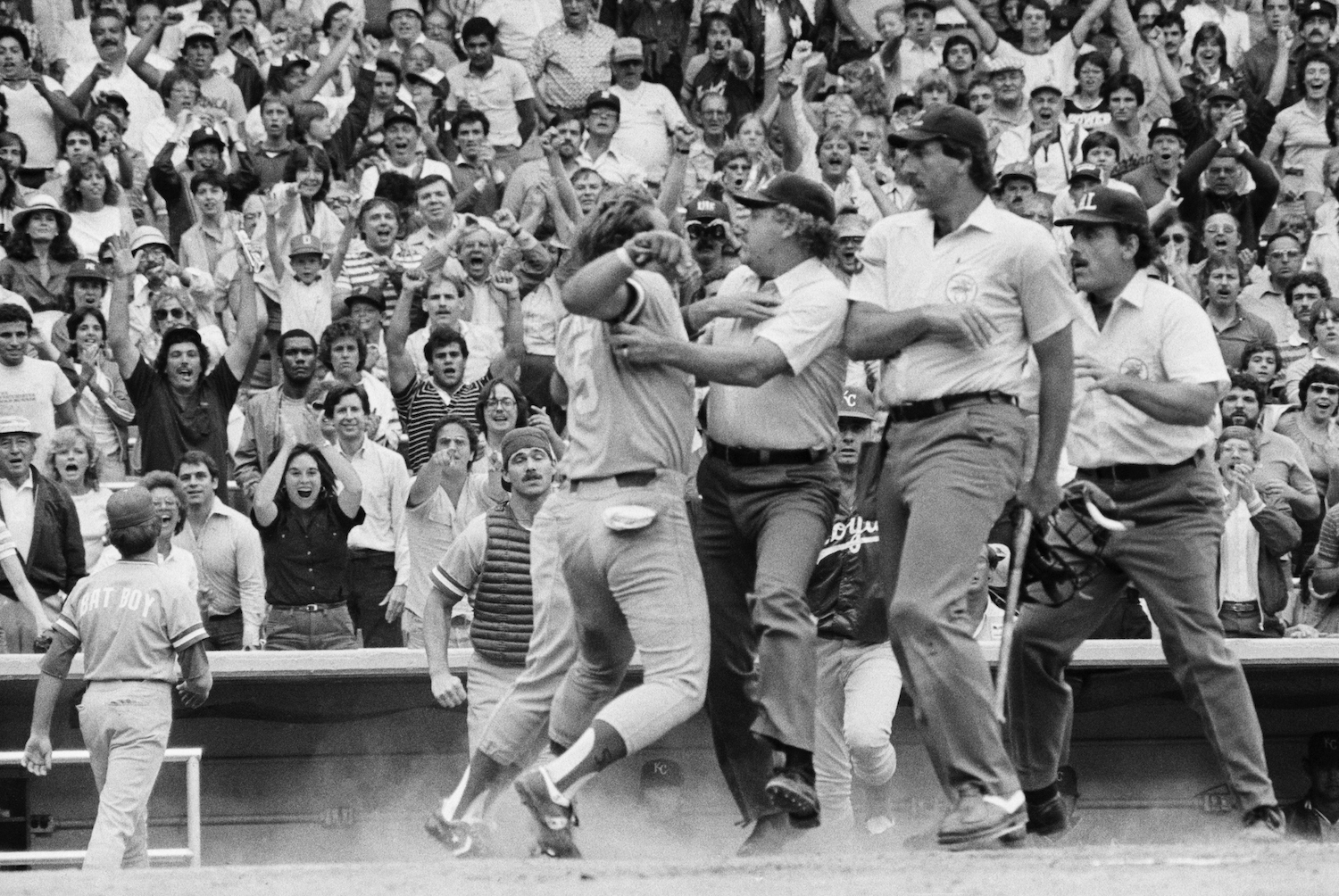MLB
MLB Flashback: George Brett and the Pine Tar Bat Incident Happened on This Day

July 24, 1983. The Kansas City Royals were in New York taking on the Yankees. With the Royals trailing 4-3 in the top of the ninth and two outs, third baseman and future Hall of Famer George Brett stepped up to the plate and delivered a blast into the right-field seats. What happened next was one of the most bizarre moments in MLB history. Here's a look back at that game, what happened in the aftermath, and where the bat is today.
George Brett and the home run that wasn't
RELATED: Where Are They Now—Morganna “The Kissing Bandit”
When George Brett hit his two-run homer in the top of the ninth inning to give the Royals a 5-4 lead, the game was still undecided. The Yankees had the bottom of the ninth to tie or claim a come-from-behind victory. It didn't get that far because New York Yankees manager Billy Martin asked the umpires to check Brett's bat for excessive pine tar.
According to MLB rules, a bat may not be covered by a substance more than 18 inches from the tip of the handle. Rookie home plate umpire Tim McClelland compared the bat to the 17-inch wide home plate and determined Brett had committed a violation. Based on that decision, McClelland spotted Brett in the dugout, pointed the bat at him, and called him out, ending the game. The ending, however, was just the beginning of chaos.
A furious Brett exploded out of the dugout, making a beeline straight for McClelland. Umpire Joe Brinkman, Royals manager Dick Howser, and several of Brett's teammates intervened. After several minutes of protest, the decision was upheld, and the game was over. One commentator summed it up best when he said, “Brett had the ignominious distinction of hitting a game-losing home run.”
AL office overturns the decision
RELATED: Kevin Seitzer Autographs Baseball for Fan 33 Years After Historic Day
The Royals protested the game. American League president Lee MacPhail upheld the Royals' protest. He said MLB created the rule based on economics, not out of fear players would receive an unfair advantage. Any contact with pine tar discolored the ball, rendered it unsuitable for play, and required it to be discarded and replaced.
This put an economic burden on the home team supplying balls for a given game. MacPhail ruled Brett had not violated the spirit of the rules nor deliberately “altered [the bat] to improve the distance factor.”
As a result of his decision, the AL president restored Brett's home run and ordered the game to be continued at a later date with two outs in the top of the ninth and the Royals leading 5–4. Despite ruling in favor of the Royals on the home run, MacPhail retroactively ejected Brett, Howser and coach Rocky Colavito for arguing with the umpires.
George Brett not present but Royals win
RELATED: These 5 MLB Hitters Could Hit .400 in the Pandemic-Shortened 2020 Season
Almost a month after the game ended in controversy, it resumed, but not without the Yankees and Martin pulling out all of the stops. Before throwing the first pitch, Yankees pitcher George Frazier threw to first base challenging that Brett never touched first on the home run. He was ruled safe. Frazier tossed the ball to second. Same call.
When Martin walked out on the field to protest, umpire Dave Phillips provided a notarized affidavit produced by McPhail's office that was signed by all four umpires of the original game indicating Brett touched every base. The league office knew Martin and his tricks all too well. The game was officially played under protest by the Yankees.
After Hal McRae struck out to end the top of the ninth, Royals reliever Dan Quisenberry retired the Yankees in order to preserve the 5-4 win.
George Brett actually used the bat several times after the incident until he was informed it would be worthless if it was broken. He retired the bat and today it can be found in the Baseball Hall of Fame.











